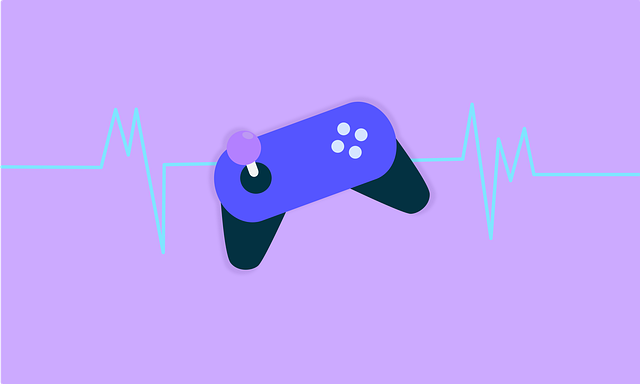Considerations for user experience (UX) are critical when designing and developing products at any stage. UX research allows practitioners to gain a deeper understanding of a product’s users in context. By developing UX research skills and learning UX research methods, your team can more efficiently create user-centered experiences.

What Is UX Research (and Why You Should Care)
UX research is an important consideration throughout the product design process, often requiring a process on its own. By iteratively conducting and synthesizing research on a product’s user experience, knowledge of the experience can increase over time. Correctly conducting this process enables UX advocates to better understand and empathize with existing and potential users.
UX researchers, designers, project managers, and other UX practitioners may conduct UX research using a variety of methods. Learnings from each method contribute to the preparation of artifacts and other deliverables. Valuable insights from synthesizing UX research drive design decisions that benefit a combination of the product, user, and business.
However, UX research can be tricky to get right. When strapped for time, teams often deprioritize UX research in the product design process. It can also be challenging to conduct both accurate and comprehensive UX research without dedicated time and resources. These, in combination, risk product teams establishing faulty generalizations that could lead to designs accomplishing the opposite of design intentions.
By taking the time to learn more about UX research, methods, and outcomes, your team can:
- Become better advocates for a combination of the product, user, and business,
- Learn how to control for bias and faulty generalizations, and
- Design products worthy of being showcased on a site like Page Flows!

UX Research Methods: Qualitative vs Quantitative Research
With the variety of UX research methods, it can feel overwhelming to know where to begin. Where your team is at in the product design process, project budget, and more can impact which methods you consider. The following sections list some more common methods, but before that, there’s a bit more you might want to deliberate.
Consider what questions you need answered in the context of qualitative vs quantitative research before considering specific methods. A qualitative method may be a helpful approach to begin understanding why someone interacts with something a certain way. To answer what, where, or when, a quantitative method may provide a better starting approach.
Whether a method is qualitative or quantitative is a common way of categorization by UX practitioners. In general, qualitative research helps product teams understand user points of view, typically sampling from smaller data sets. Quantitative research may help your team come to the same conclusion but more, well, quantitatively.
Many methods fall into one or both of these two categories. While each type of method has its pros and cons, often, the best insights come from using both in combination. The following sections provide a high-level overview of methods within each category alongside additional considerations for use.
Qualitative UX Research
Qualitative research involves observing and studying users to uncover various whys throughout the product design process. There are a variety of qualitative UX research methods that cover an extensive range of types of research questions.
- User interviews: Topic-centric discussions with participants typically used at the start or end of a project. A list of qualitative UX research methodologies wouldn’t be complete without user interviews! For a more casual option, you could also consider going to a meet-up.
- Field studies: An overarching term for research conducted in a user’s typical environment (vs a researcher’s, like an office, etc.).
- Contextual inquiry: A hybrid between user interviews and field studies.
- Focus groups: Similar to user interviews but with a group of participants instead. In a focus group, your team can get more people to answer more questions more quickly. However, this may be at the expense of participants feeling pressure to adhere or reluctance to speak up. These group dynamics can be essential to consider when synthesizing observations from focus groups.
- Diary studies: Used to understand longer-term experiences, similar to a field study.
- Surveys: Questionnaires that can be qualitative, quantitative, or both. Surveys that skew qualitative may include more open-ended questions.
- Card sorting: Where participants sort cards toward developing a user-centric content structure. Open card sorting is more generative, where participants may organize topics into groups they define. Closed card sorting is more evaluative, where participants may only organize topics into predefined categories.
- Usability testing: Qualitative or quantitative, generally involving observing participants as they perform specific tasks.
- Concept testing: An overarching term for processes to evaluate the viability of a product concept.
While not an exhaustive list, these more common methods can help your team get started with more qualitative observation and discovery.
Quantitative UX Research
Quantitative UX research generalizes conclusions from more extensive data sets, often using numerical data to try and predict user behavior. It can involve observing users less directly, and can tend to be more on the evaluative side. Quantitative UX research methods include:
- Usability testing: Inclusive of performance and perception metrics like task completion times, success rates, number of errors, and satisfaction ratings. Quantitative usability testing results may not be effective unless presented alongside relevant context. This context could include quantitatively testing competitors or previous iterations or testing qualitatively in tandem.
- Analytics: Metrics like pages users visit and what they do on them/how long they spend there. These can offer detailed insights into how users interact with a product. Some analytics services may also provide demographics, which can help verify assumptions made from earlier research.
- Card sorting: Typically qualitative, but analyzing whether participants grouped cards similarly could lead to more quantitative insights.
- Surveys: Questionnaires that can be qualitative, quantitative, or both. Surveys that skew quantitative may survey a more extensive number of people or include a larger number of questions overall.
- Tree testing: Similar to usability testing, or card sorting but more evaluative. Participants are tasked with finding information within a hierarchical site structure or “tree.” Tree testing may also be known as Treejack, Optimal Workshop’s tree testing software.
- A/B testing: Quantitatively evaluating different versions of a design to see which performs better. What “better” means must be both defined and measurable. A/B testing also only confirms a better option, while the “best” may have yet to be designed. A common tool for A/B testing is Optimizely, whose onboarding you can preview on Page Flows before signing up!
This list of common quantitative UX research methods can guide more quantitative product analysis and synthesis.

Other Categories of UX Research Methods
Quantitative UX research can tend to be more on the evaluative side — but as opposed to what? UX research methods can fall into other categories besides just qualitative or quantitative. Understanding these categories and when to use them may help your team better select which research method to use and when.
For example, generative research encompasses methods that help project teams learn more about their users toward user-centered ideation. Generative research may also be known as discovery research, exploratory research, or foundational research. Examples of generative research methods include user interviews, focus groups, field studies, and contextual inquiry.
After using generative research to ideate, you can use evaluative research to evaluate the ideas. Evaluative research can encompass formative and summative research, used to improve and compare product usability, respectively. Examples of evaluative research include (closed) card sorting, tree testing, (qualitative) usability testing, A/B testing, and surveys.
Another category is attitudinal research, which evaluates what people say. Examples of attitudinal research methods include card sorting, surveys, and focus groups. These methods may not be comprehensive, as participants may be inhibited by what they can remember or emotions when reporting.
Its complement is behavioral research, which aims to measure what users actually do over what they might say. Typically more quantitative and evaluative, examples of behavioral research methods include A/B testing and eye tracking. Behavioral research can also be considered more applied vs more conversational or discussion-based.
Again, combining methods across categories typically provides the highest quality insights, and some methods even span multiple categories. For example, surveys could be considered either generative or evaluative. Similarly, usability and field studies could be categorized as both attitudinal and behavioral, depending on how they are conducted.
Approaching UX Research After Selecting a Method
After narrowing in on a UX research method, you’ll need to determine how you might like to conduct it. You can conduct each UX research method in one of three ways: moderated in-person, moderated remotely, or unmoderated. Each approach offers unique advantages and additional points to consider before choosing a particular combination for your study.
As the name implies, moderated research sessions are led by moderators in real time. This enables moderators to ask follow-up questions, allowing a deeper understanding to be gained directly from the source. However, moderated research typically requires more dedicated time and resources, and troubles with scheduling can limit participation.
Unmoderated research offers additional flexibility, allowing participation outside specific (business) hours and geographic requirements. It can also be less expensive per participant, enabling studies to scale more easily. Usability testing, surveys, A/B testing, tree testing, diary studies, and card sorting are examples of methods that may be conducted unmoderated.
Moderated research sessions allow moderators to build rapport with users more easily. (However, one study suggests that the jury may still be out as to whether building rapport is beneficial for data quality.) On the other hand, unmoderated research may give participants a feeling of anonymity or less of a feeling of being “observed.”
Which approach you go with ultimately depends on your study goals and the time and resources your team has available. Conducting moderated research remotely can offer a good middle ground with overlapping benefits between both moderated in-person and unmoderated research.
There are also an increasing variety of tools designed to help with your next remote (moderated or unmoderated) research study! For reference, Maze compiled a list of top-rated UX research tools and software with aggregated Capterra and G2 software reviews.

UX Research Methods Cheat Sheet
With all these categories, you might wonder if there’s an easier way to review what you’ve learned. While there’s no one way to organize this information, these categorizations can also offer a simple overview to get started.
The following UX research methods cheat sheet categorizes each UX research method for easy reference. Methods may appear across categories, and how they are designated can often depend on their application.
Qualitative UX research methods can include:
- Card sorting
- Contextual inquiry
- Desirability studies
- Diary studies
- Eye tracking
- Field studies
- Focus groups
- Heuristic evaluation
- Surveys
- Tree testing
- Usability testing
- User interviews
Quantitative UX research methods can include:
- A/B testing
- Analytics
- Card sorting
- Desirability studies
- Eye tracking
- Heat maps
- Surveys
- Tree testing
- Usability testing
Generative UX research methods can include:
- Card sorting
- Contextual inquiry
- Diary studies
- Field studies
- Focus groups
- Surveys
- User interviews
Evaluative UX research methods can include:
- A/B testing
- Card sorting
- Diary studies
- Heuristic evaluation
- Surveys
- Tree testing
- Usability testing
Attitudinal UX research methods can include:
- Card sorting
- Contextual inquiry
- Desirability studies
- Diary studies
- Focus groups
- Surveys
- Tree testing
- User interviews
And finally, behavioral UX research methods can include:
- A/B testing
- Analytics
- Eye tracking
- Field studies
- Usability testing
Which method you employ is ultimately based on many factors determined by you and your team. You may even use the same method in different ways throughout a study or project.

So, Which UX Research Method Is Right for Me?
The answer is… it depends!
Depending on where your team is at in the product design process, you may need more generative or evaluative research. You may want to start with an attitudinal or behavioral research method after considering what question you want to answer. Based on the type of users you can access, you may opt for qualitative or quantitative research.
Different methods may be more or less applicable depending on your team size and structure. Working on a smaller team, you might need to serve in multiple roles to conduct something like a focus group. Recruiting, scheduling, facilitating/moderating, and both taking and synthesizing notes may be challenging as just a researcher (vs a team).
Working for a larger company may be a different story. You may have access to additional resources that ease the challenge of conducting a task like this alone. By thinking about and contextualizing what research you need, you can select a proper method for the task at hand!
UX Research vs User Research
When looking to learn more about UX research, you may have also come across the term “user research.” Often used alongside or interchangeably with the term UX research, user research aims to study users more directly. Methods for each commonly overlap — there’s no understanding of the user experience without first understanding the users!

What To Do After Conducting UX Research
Each UX research method offers various insights and conclusions. However, to get to those valuable insights, you must first know how to synthesize what you’ve learned.
Synthesizing typically involves taking notes throughout the process to organize findings using an affinity diagram or similar. Insights naturally arise from analyzing patterns or trends when iterating on and revising the diagram. Using these insights, you can generate How might we (HMW) questions toward user-centered ideation and evaluation.
Synthesizing can also be tricky to get right, even when working with a lot of data. Without a proper amount of synthesis, your data may be under-analyzed, or your categories may end up being too broad. You may also end up oversimplifying vast amounts of data, resulting in categories needing to be more detailed to lead to valuable insights.
When you’re synthesizing it can also be a good time to revisit any biases identified throughout your research. By doing so, your team can ensure that they are thoroughly considered and adequately addressed.
Working as a UX Researcher
The most common job title for someone who conducts UX research is a UX researcher. Some companies also specify if they are looking for someone with more qualitative or quantitative UX research experience. They may also look for candidates with mixed methods research experience, typically referring to a combination of the two.
Sometimes, conducting UX research may also be included in a UX designer’s responsibilities. Per the U.S. Bureau of Labor Statistics, the outlook for Web and Digital Interface Designers overall is generally optimistic. (Despite the occupation title, their description includes testing, evaluating, and analyzing designs, encompassing the responsibilities of a UX researcher.)
Any product with users could benefit from applying UX research methods to better UX design. If you’re looking for proven products that have been through the process, Page Flows can be a helpful resource for inspiration! Get started today to access a growing library of user flow recordings and stay up-to-date with current design trends.




